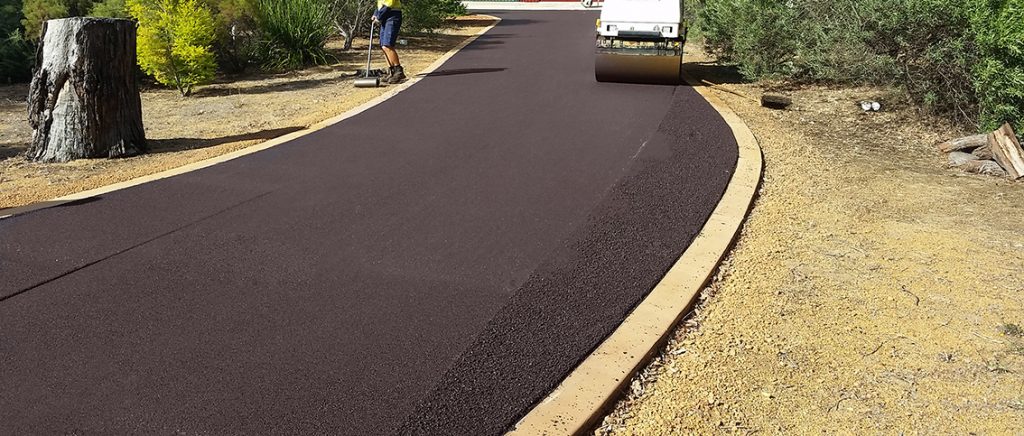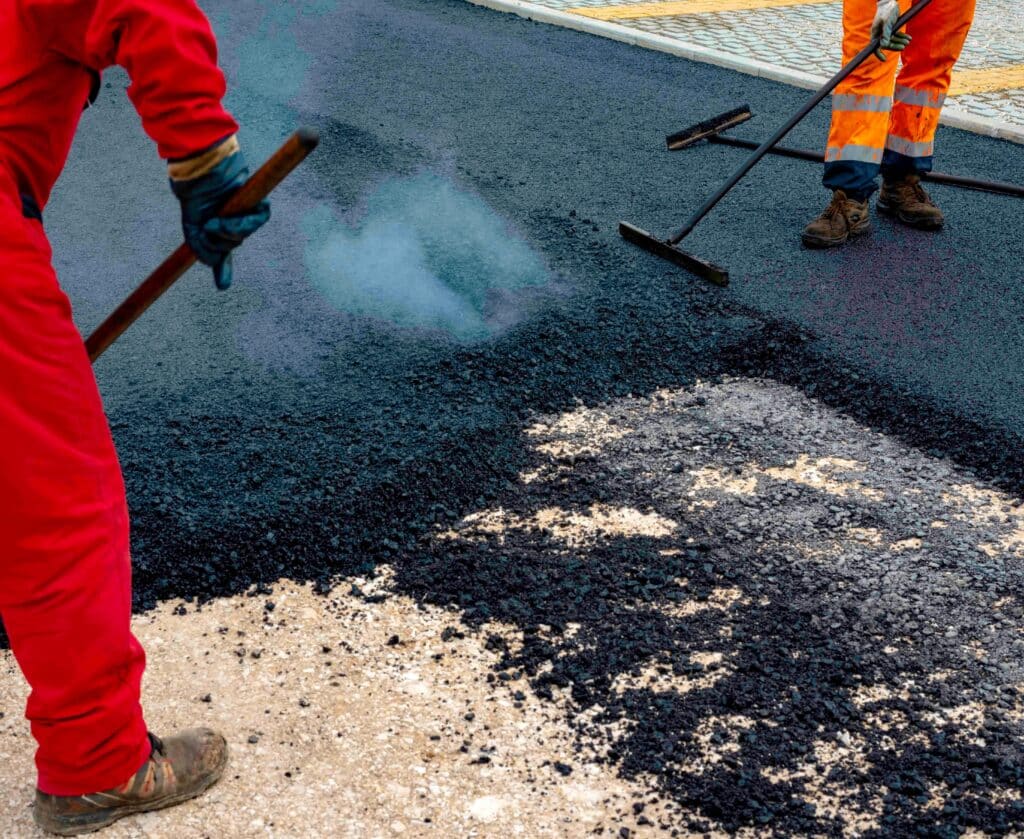Hot Mix Asphalt Paving: Redefining Commercial Property Landscapes
Hot Mix Asphalt Paving: Redefining Commercial Property Landscapes
Blog Article
Opening the Keys of Warm Mix Asphalt Technology
Exploring the depths of hot mix asphalt technology uncovers a world where precise formulas and careful procedures assemble to shape our roads and infrastructure. The fusion of accumulations, fillers, and binders isn't simply a building task but a tactical orchestration of toughness and effectiveness. As we peer into the elaborate dance of parts, a tapestry of strength and sustainability unravels. What exists underneath this surface of asphaltic proficiency, and what keys wait to be revealed in the realm of leading advancements?
Relevance of Hot Mix Asphalt
Hot Mix Asphalt plays a crucial function in modern framework advancement due to its resilience and cost-effectiveness. As the most typically made use of leading product for roadways, freeways, and parking lots, Hot Mix Asphalt provides a range of benefits that contribute to its significance in construction projects.
The resilience of Hot Mix Asphalt comes from its structure, that includes aggregates, binder, and filler materials that are carefully chosen and blended to meet specific efficiency needs. This exact mix leads to a flexible and strong pavement that can endure constant usage without considerable deterioration. Furthermore, Hot Mix Asphalt is 100% recyclable, more boosting its sustainability and environmental advantages. On the whole, the value of Hot Mix Asphalt in infrastructure growth can not be downplayed, as it continues to be a keystone of modern-day building practices.
Parts of Asphalt Mixes
The structure of asphalt blends is composed of carefully chosen accumulations, binder, and filler products that are crucial for achieving particular efficiency needs. Aggregates are the primary element of asphalt blends, supplying toughness and security. The binder, typically bitumen or asphalt cement, holds the aggregates together and offers versatility and longevity to the mix.
The mix and percentage of these parts play a substantial role in determining the quality and performance of the asphalt mix. Designers carefully design the mix to meet specific requirements, considering factors like traffic quantity, environment problems, and pavement life expectancy. Appropriate selection and balancing of accumulations, binder, and fillers are crucial for developing sturdy, durable asphalt sidewalks.
Mixing and Production Methods

Once the aggregates are selected, the binder, often asphalt cement, is added to bind the products with each other. The binder's high quality and quantity significantly impact the mix's adaptability, resistance, and toughness to environmental elements. In addition, fillers like hydrated lime or Portland concrete might be integrated to enhance specific qualities of the asphalt mix, such as its workability or wetness resistance.
During manufacturing, the accumulations and binder are heated up, generally between 250-325 ° F(121-163 ° C ), to promote blending and guarantee proper coating of the accumulations. The blending process has to be detailed to accomplish a homogeneous combination that advertises the desired efficiency attributes of the asphalt. Various strategies, such as batch mixing or drum blending, are utilized to achieve top quality and regular asphalt mixes for construction tasks.
Factors Influencing Asphalt Efficiency
Variables influencing asphalt efficiency encompass a variety of variables that impact the durability, durability, and total high quality of asphalt sidewalks. One essential variable is the high quality of products used in the asphalt mix. The kind and resource of aggregates, the binder top quality, and the additives all play a substantial duty in identifying the efficiency of the asphalt sidewalk. The gradation of accumulations is crucial as it impacts the mix's resistance, security, and workability to rutting and cracking.

Design considerations, such as pavement thickness and drain, are crucial in ensuring the long-term performance of the asphalt pavement. By thoroughly thinking about these elements, engineers and professionals can optimize asphalt performance and boost the solution life of sidewalks.
Sustainable Practices in Asphalt Technology

Furthermore, the advancement of warm-mix asphalt (WMA) innovations has gained grip over the last few years. WMA enables for the production and positioning of asphalt blends at lower temperature levels contrasted to conventional hot-mix asphalt, resulting in minimized energy consumption and greenhouse gas exhausts. The usage of porous asphalt blends can help minimize stormwater overflow issues by permitting water to infiltrate with the pavement and right into the ground, advertising natural water purification and charge procedures. By carrying out these lasting methods, the asphalt sector can add to constructing a much more eco friendly and resistant infrastructure network.
Verdict
To conclude, warm mix asphalt modern technology plays a vital duty in modern see infrastructure development due to its sturdiness and cost-effectiveness. By meticulously stabilizing parts, employing appropriate mixing methods, and thinking about different elements, engineers can create top quality asphalt mixes that endure rush hour loads and rough climate condition. Welcoming lasting practices, such as anchor making use of recycled products and warm-mix modern technologies, even more enhances the ecological kindness of asphalt innovation.
Blending and manufacturing methods in hot mix asphalt modern technology entail the exact combination and handling of accumulations, binder, and fillers to create a durable and high-performance asphalt mix.Aspects influencing asphalt efficiency encompass a variety of variables that impact the durability, long life, and overall top quality of asphalt sidewalks. Sustainable techniques in asphalt innovation encompass numerous efforts intended at minimizing the environmental effect of asphalt production and paving procedures. By incorporating redeemed asphalt pavement (RAP) and recycled asphalt tiles (RAS) into brand-new asphalt mixes, the sector can considerably reduce the usage of raw products and energy, while additionally decreasing land fill waste.
WMA allows for the manufacturing and positioning of asphalt mixes at reduced temperatures contrasted to traditional hot-mix asphalt, resulting in minimized energy usage and greenhouse gas exhausts.
Report this page